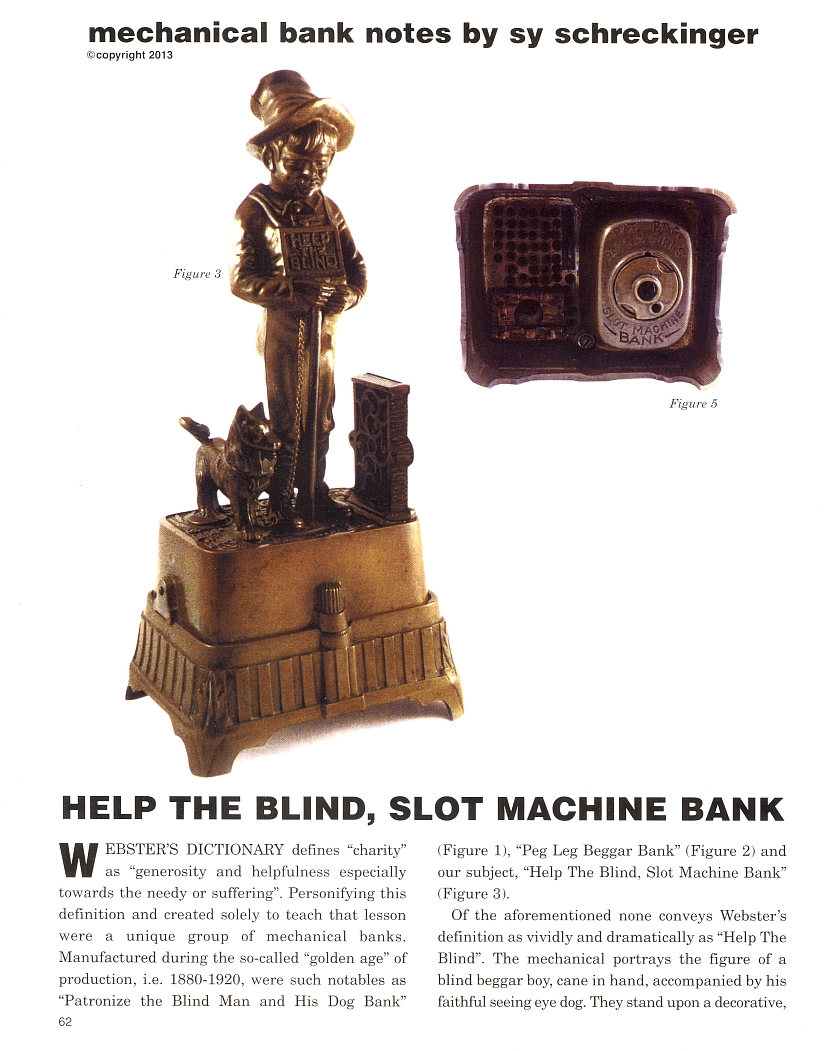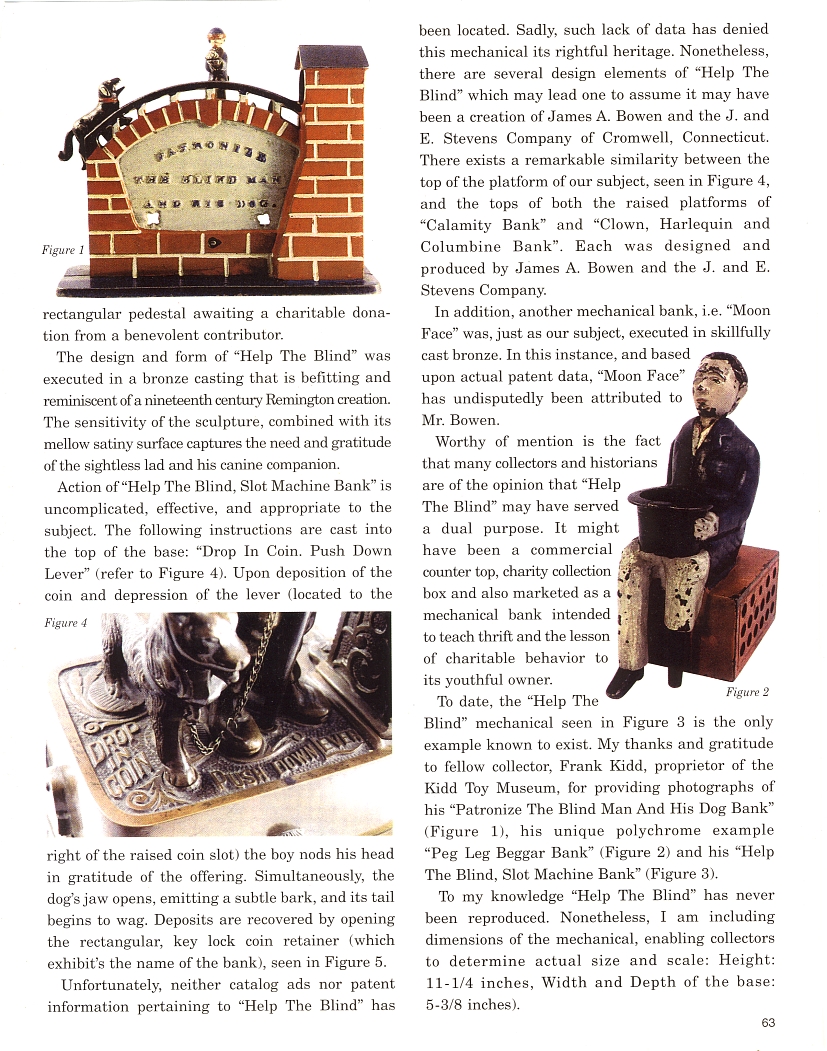|
Help the Blind,
Slot Machine Bank
by Sy Schreckinger – ANTIQUE TOY WORLD Magazine – November, 2013
WEBSTER'S DICTIONARY defines "charity" as "generosity and helpfulness
especially towards the needy or suffering". Personifying this definition
and created solely to teach that lesson were a unique group of
mechanical banks. Manufactured during the so-called "golden age" of
production, i.e. 1880-1920, were such notables as "Patronize the Blind
Man and His Dog Bank" (Figure 1), "Peg Leg Beggar Bank" (Figure 2) and
our subject, "Help The Blind, Slot Machine Bank" (Figure 3).
Of the aforementioned none conveys Webster's definition as vividly
and dramatically as "Help The Blind". The mechanical portrays the figure
of a blind beggar boy, cane in hand, accompanied by his faithful seeing
eye dog. They stand upon a decorative, rectangular pedestal awaiting a
charitable donation from a benevolent contributor.
The design and form of "Help The Blind" was executed in a bronze
casting that is befitting and reminiscent of a nineteenth century
Remington creation. The sensitivity of the sculpture, combined with its
mellow satiny surface captures the need and gratitude of the sightless
lad and his canine companion.
Action of "Help The Blind, Slot Machine Bank" is uncomplicated,
effective, and appropriate to the subject. The following instructions
are cast into the top of the base: "Drop In Coin. Push Down Lever"
(refer to Figure 4). Upon deposition of the coin and depression of the
lever (located to the right of the raised coin slot) the boy nods his
head in gratitude of the offering. Simultaneously, the dog's jaw opens,
emitting a subtle bark, and its tail begins to wag. Deposits are
recovered by opening the rectangular, key lock coin retainer (which
exhibit's the name of the bank), seen in Figure 5.
Unfortunately, neither catalog ads nor patent information
pertaining to "Help The Blind" has been located. Sadly, such lack of
data has denied this mechanical its rightful heritage. Nonetheless,
there are several design elements of "Help The Blind" which may lead one
to assume it may have been a creation of James A. Bowen and the J. and
E. Stevens Company of Cromwell, Connecticut. There exists a remarkable
similarity between the top of the platform of our subject, seen in
Figure 4, and the tops of both the raised platforms of "Calamity Bank"
and "Clown, Harlequin and Columbine Bank". Each was designed and
produced by James A. Bowen and the J. and E. Stevens Company.
In addition, another mechanical bank, i.e. "Moon Face" was, just as
our subject, executed in skillfully cast bronze. In this instance, and
based upon actual patent data, "Moon Face" has undisputedly been
attributed to Mr. Bowen.
Worthy of mention is the fact that many collectors and historians
are of the opinion that "Help The Blind" may have served a dual purpose.
It might have been a commercial counter top, charity collection box and
also marketed as a mechanical bank intended to teach thrift and the
lesson .4 of charitable behavior to its youthful owner.
To date, the "Help The Blind" mechanical seen in Figure 3 is the
only example known to exist. My thanks and gratitude to fellow
collector, Frank Kidd, proprietor of the Kidd Toy Museum, for providing
photographs of his "Patronize The Blind Man And His Dog Bank" (Figure
1), his unique polychrome example "Peg Leg Beggar Bank" (Figure 2) and
his "Help The Blind, Slot Machine Bank" (Figure 3).
To my knowledge "Help The Blind" has never been reproduced.
Nonetheless, I am including dimensions of the mechanical, enabling
collectors to determine actual size and scale: Height: 11-1/4 inches,
Width and Depth of the base: 5-3/8 inches). |


